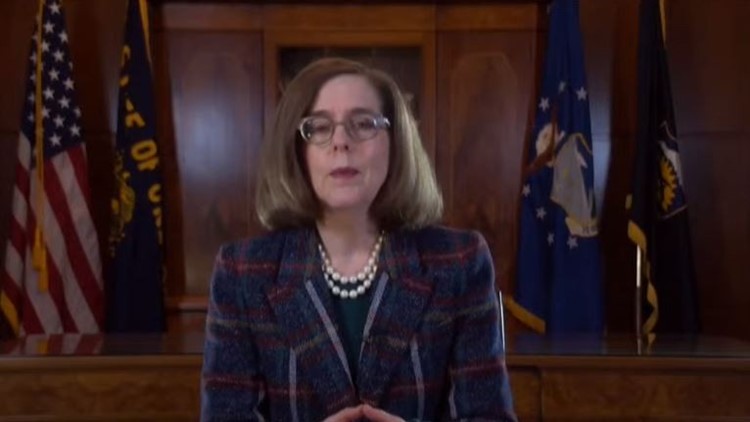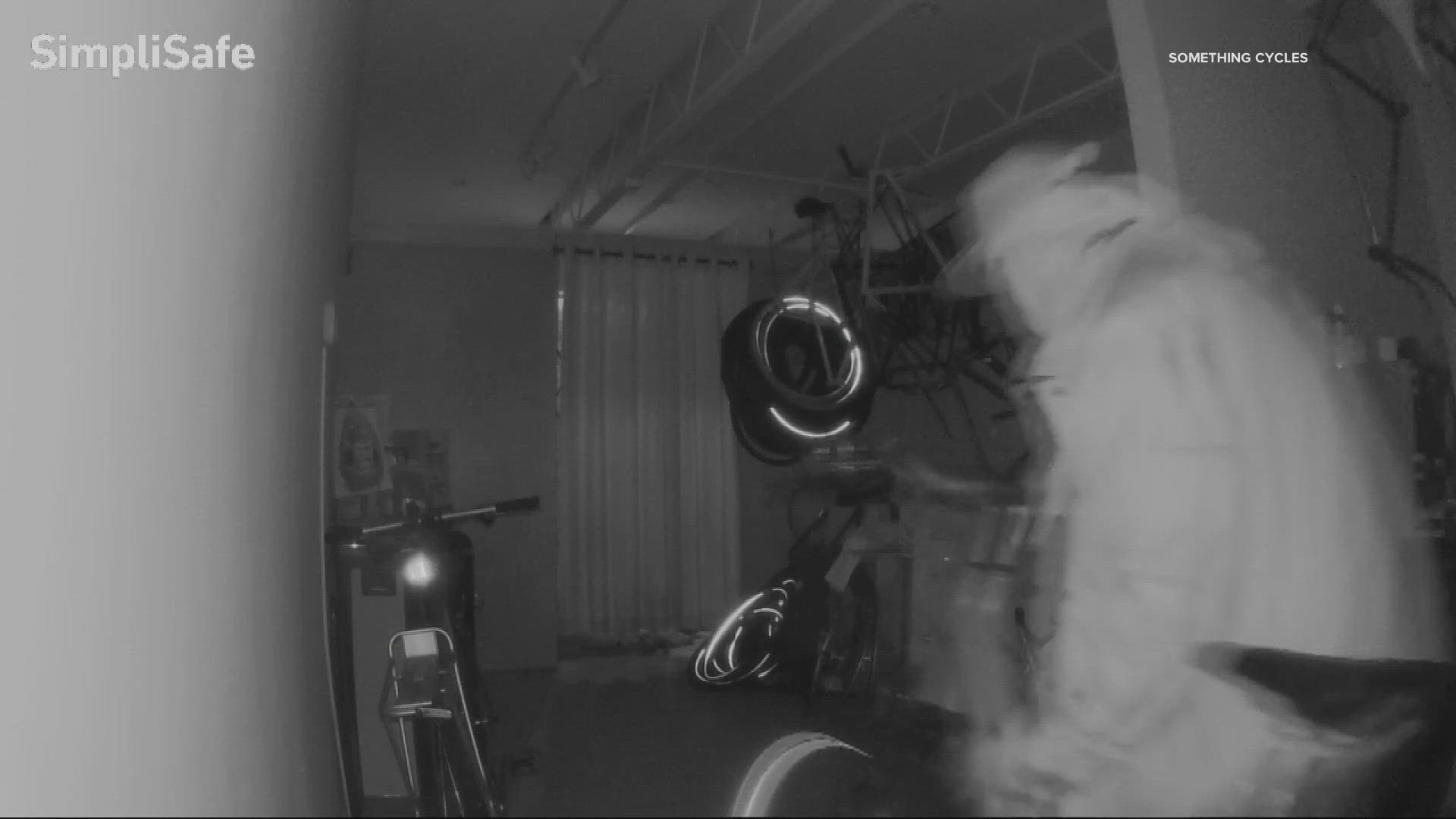PORTLAND, Ore — Oregon Gov. Kate Brown defended her controversial decision to prioritize COVID-19 vaccinations for teachers during a news conference Friday.
Brown said vaccinating educators before Oregon's seniors is the only way schools could safely reopen during this school year. She said students must return to schools for their own mental health.
“I’m using every single tool we have to get our kids back in the classroom this school year,” Brown said.
Brown said she has heard stories of children dealing with anxiety, depression and attempting suicide.
“Our children are suffering,” she said.
The Centers for Disease Control and Prevention recommends that people 65 and older be vaccinated after health care workers and before other essential workers.
During Friday's news conference, the Oregon Health Authority (OHA) released a newer, more specific timeline for its goals of vaccinating Oregon educators and seniors.
Teachers are eligible for vaccines on Jan. 25. Seniors 80 and older will be eligible the week of Feb. 7.
Editor's note: OHA issued a corrected timeline for the vaccine distribution plan. This graphic has been updated.
Brown said Oregon has done a better job of protecting seniors than almost every other state.
“I have prioritized protecting seniors since day one of this response,” the governor said. She added Oregon has the second-lowest COVID-19 infection rate among seniors in the country.
“I am asking these seniors to hold tight and stay safe for just a few more weeks,” Brown said. “I wish we had more vaccines to give.”
Two-thirds of people in Phase 1a of Oregon’s vaccine plan have been vaccinated, health officials said.
The OHA's updated timeline could change depending on the number of vaccine doses Oregon receives from the federal government.
“There are no easy answers here. Only difficult decisions,” Brown said. “My priorities have not changed, only my timeline has.”
Brown also defended her approach to the pandemic during Thursday’s virtual State of the State address, saying Oregon is doing a better job than “most of the country.” She compared Oregon’s effort to stop the spread of the coronavirus to a marathon.
“In a short race, like the 100-meter dash, you run as hard as you can for a short period of time," Brown said. "In a marathon, you have to play the long game.”
Following Brown's press conference, KGW emailed the governor's communications director, Natalie King, some questions from viewers.
Q: Hospitalizations of teens attempting suicide are down. So why is this a priority? What do you say to seniors who themselves are experiencing suicidal thoughts?
King: I’d caution against only using data on teen suicide rates—data on suicide attempts is incredibly difficult to collect, and such numbers are often underreported. That’s particularly the case when teachers and educators in schools are often some of the first people to notice and identify child abuse, neglect, and when a student needs help from behavioral health professionals—something that’s much more difficult when teachers and students are not in schools. Many schools also have counselors, school psychologists, and other specialists on-site who can engage with students and their families when school buildings are open. The educational, social, emotional, mental, and physical health of so many students is tied to their schools and to the personalized attention and support that educators provide. The students who are hurting most, and for whom very little data can be collected, are the students we know have already borne the disproportionate impact of the pandemic—those from Black, Indigenous, Latino, Latina, and Latinx, tribal, and communities of color.
In addition to the mental health impacts of distance learning on Oregon children, there are also equity-centered reasons to prioritize vaccinating teachers, educators, and child care providers. Working parents from low-income families are particularly burdened when school buildings are closed by the need to find safe and reliable child care for students learning from home. The benefits of vaccinating educators extend both to students and to working parents, who have struggled to balance work, school, and child care during the pandemic. The students and families who have been hardest hit by the impacts of distance learning are disproportionately families of color and low-income families, with the biggest impacts felt by working mothers. Returning more students to the classroom can also help reduce COVID-19 risks for grandparents who have been caregivers for their grandchildren during the school day.
Q: What do you say to younger seniors 65-70 who are repeatedly getting bumped further and further down the list? We've heard so much frustration from this population who are seeing their peers in 45 other states get vaccines.
King: The Governor’s priorities have not changed, just the timeline. Oregon students are suffering. On December 22nd, prior to issuing her December 23rd letter to OHA and ODE, the Governor announced her decision to prioritize K-12 educators, early learning, and child care providers for vaccinations. When the federal government early last week indicated they would be sending Oregon a larger number of vaccines, she immediately prioritized all of our seniors as well. Oregon continues to vaccinate our most vulnerable seniors in long-term care facilities and other congregate living situations. We will begin vaccinating older seniors outside of congregate care settings on February 8, two weeks later than planned when we thought the federal government would be sending us a larger number of vaccines. Many seniors who live independently, especially those who are not from low-income families or communities of color, have the ability to isolate, and to continue exercising safety precautions such as wearing masks and maintaining physical distance over the next two weeks––more so than seniors working and living in congregate settings. Additionally, because there are far fewer school employees than there are seniors in the state, and with more limited vaccine supplies available than we expected, it made sense to start with the smaller group, with the timeline of returning students to in-person instruction in mind. Of course, we will continue to also vaccinate Oregonians already eligible in Phase 1a.
These are tough decisions, and we thank all Oregonians for their sacrifices and their patience in exercising safety precautions such as mask wearing and physical distancing for a few more weeks before these vaccinations can begin. This is very hard. Last week’s revisions to Oregon’s schedule for vaccinating educators and seniors does not reflect valuing one group of Oregonians over the other—it is simply a case of having far less vaccine supplies than the federal government instructed us to prepare for a week ago.
By asking our seniors to wait two more weeks, we plan to vaccinate the majority of our educators and school staff, and get kids back in the classroom this school year. Other states that have opened up their vaccine prioritization to large groups of people are now facing significant delays due to insufficient vaccine supplies. Our students’ educational, social-emotional wellbeing, mental health, and their safety from abuse and neglect, depends on their in-person connections in school. This is a tough decision, but it will have a major impact for many Oregonians––especially for families that have felt the disproportionate impact of COVID-19.
Q: Based on the new vaccination timetable published Friday, when can people in group 1C (ages 16-64 with high-risk medical conditions) be vaccinated?
King: OHA would be the best resource to answer this question in more detail, as I believe the Vaccine Advisory Committee is deliberating on the question on where to prioritize individuals with underlying health conditions. There are over 1.6 million Oregonians with underlying health conditions, and over 700,000 seniors living outside of congregate care settings. There simply are not nearly enough vaccines to vaccinate those two groups at present. By contrast, there are about 100,000 teachers, educators, and child care workers in Oregon.
Sara Cline, Associated Press/Report for America contributed to this report.



